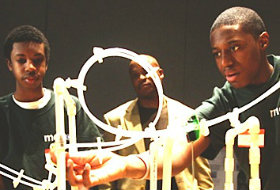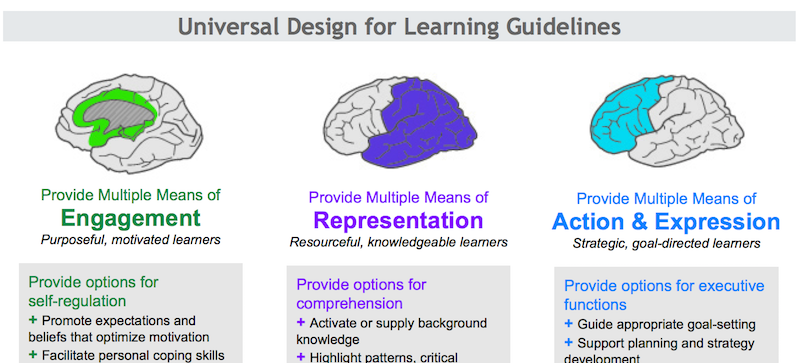A MiddleWeb Blog
 Teachers, what do you consider to be the foundation of all learning in your classroom?
Teachers, what do you consider to be the foundation of all learning in your classroom?
Before you read any further, jot your thoughts on a sticky or a piece of scrap paper (no glancing ahead, please. Keep your thoughts authentic to you).
Need a hint?  Let’s put it another way: what one thing has to be fully and firmly established before you can build up your learning environment?
Let’s put it another way: what one thing has to be fully and firmly established before you can build up your learning environment?
I hope you’ve given my question some serious thought and jotted down the word or phrase that describes what you believe to be the foundation, the core, the underpinning of all learning in any classroom.
There’s no absolute right answer, but here’s what I think…
The Place to Start
 http://www.middleweb.com/wp-content/uploads/2016/02/es-brick-mortar-270-orange.jpg 270w" sizes="(max-width: 270px) 100vw, 270px" />Student engagement is where it’s at if you’re looking to create (or, in the case of co-teacher, to co-create) meaningful learning for each child in your classroom. If that makes good sense to you, then it’s definitely worthwhile to take some time and measure the degree of student engagement in your learning environment.
http://www.middleweb.com/wp-content/uploads/2016/02/es-brick-mortar-270-orange.jpg 270w" sizes="(max-width: 270px) 100vw, 270px" />Student engagement is where it’s at if you’re looking to create (or, in the case of co-teacher, to co-create) meaningful learning for each child in your classroom. If that makes good sense to you, then it’s definitely worthwhile to take some time and measure the degree of student engagement in your learning environment.
I’m not talking about checking to see if students are sitting up, facing forward, following directions, and speaking when spoken to. No! I’m not even talking about the kind of engagement where students are participating in group activities and discussions when prompted.
Don’t be lulled into a false sense of satisfaction by these outward appearances. We need to get much deeper. I’m talking about a shaking-it-up kind of way to measure and then bolster student engagement, so each learner in your room has the opportunity to personally connect and comprehend.
When you have some time, check out this article at Edutopia that helps us answer the question How do we know when students are really engaged? This article is sure to guide you in assessing the teaching and learning moves in your classroom. It begins by citing a study that found “of 1,500 classrooms visited, 85 percent of them had engaged less than 50 percent of the students.”
Meaningful Student Engagement
 Teachers have been working on this engagement thing for a long time. Look at this ASCD Educational Leadership article from 1995:Strengthening Student Engagement: What Do Students Want (and what r... The authors clearly outline four essential goals and an overall outcome, creating the acronym SCORE.
Teachers have been working on this engagement thing for a long time. Look at this ASCD Educational Leadership article from 1995:Strengthening Student Engagement: What Do Students Want (and what r... The authors clearly outline four essential goals and an overall outcome, creating the acronym SCORE.
These four goals are driven by natural human needs that result in positive interactions with learning. The authors’ research led them to believe that all learners must have:
- Success—to experience mastery
- Curiosity—to find answers to their questions—and to understand
- Originality—to find ways to express themselves that demonstrate their personality, talents, and strengths.
- Relationships—to collaborate with others
And the result of providing these four goals leads to
- Energy—When learners’ intrinsic motivation increases in such a way that the productive energy needed to push through challenges, face confusion, and embrace the learning process takes hold.
What Co-Teachers Can Do
- In general, when thinking about engagement, use the UDL Guidelines to create a framework for you to think about how to work toward instilling intrinsic motivation. When you notice the Engagement column of the guidelines, begin with options for recruiting interest—then move toward options for sustaining effort and persistence—and finally see the top of the guidelines for options for self-regulation. This UDL framework allows learners to become self-regulated, intrinsically motivated learners with the external efforts and decisions we make as we design our classroom environment.
- Edutopia comes to the rescue again as we search for strategies to spark each student’s curiosity—check out this link.
- But Edutopia doesn’t stop there! Get a refresher on How Curiosity Enhances Learning.
- Provide specific, meaningful feedback to guide learners toward mastery. Use these strategies (once again at Edutopia!) to spark up your daily routines.
- Looking for more tips for providing specific, meaningful feedback? Here’s 20 more tips and strategies—provided by TeachThought.
- Let your creativity take charge as you provide multiple ways for students to express their understanding. Once again, theUDL guidelines provide the structure we are looking for! Check out the Action and Expression column. You will get tips for guiding the strategic networks of each brain in your classroom!
- Incorporate plenty of meaningful cooperative learning activities. But make sure students are not just going through the motions. Provide opportunities for students to feel valued and to extend their knowledge base as they learn alongside their peers. Check out this Educational Leadership article at ASCD to Make Cooperative Learning Powerful (it’s from the “Instruction That Sticks” issue!).
Now Watch the Sparks Fly!
 Oh, the sparks will fly, and the learning will soar! The students will not want to leave your classroom, because it is a comfortable setting where they are free to connect with the curriculum in meaningful ways.
Oh, the sparks will fly, and the learning will soar! The students will not want to leave your classroom, because it is a comfortable setting where they are free to connect with the curriculum in meaningful ways.
And here’s a huge bonus: the energy in your room will be felt around the entire school, because that’s how powerful the learning process can be.
One final thought before I call this post done for now…
Be sure to incorporate true growth mindset belief systems to guide your students to push through the natural challenges that must happen in all positive learning experiences. Did you notice I said “true” growth mindset? Well, here’s why. Be sure to keep it real!
So what did you jot down in the beginning of this post? What do you believe to be the foundation of all learning? Does student engagement make sense as the “Big Bang” of learning? Please share your thoughts—and let’s create a solid foundation for all!

You need to be a member of School Leadership 2.0 to add comments!
Join School Leadership 2.0